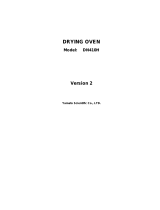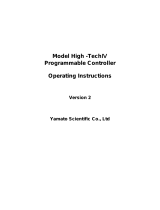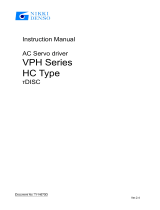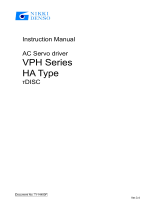
Table of Contents
For Safety Use ........................................................................................................................................1
Explanation of illustrated symbols....................................................................................................1
Table of Symbol Mark.......................................................................................................................2
Safety Precautions.................................................................................................................................3
Installation and Preparation for Use.................................................................................................4
About the inhalation port...................................................................................................................8
Precautions in Handling........................................................................................................................9
Emergent Troubleshooting .................................................................................................................13
Identification of “TROUBLE” and Error Code/Causes....................................................................13
Identification of Parts...........................................................................................................................14
Main unit.........................................................................................................................................14
Control Panel..................................................................................................................................15
Safety Precaution and Check..............................................................................................................17
Operating Procedure............................................................................................................................18
Operating Procedure......................................................................................................................18
Fixed temperature operation instructions.......................................................................................19
Auto start operation instruction.......................................................................................................20
Auto stop operation method ...........................................................................................................21
Programmed operation method......................................................................................................23
Switching from one operation to another........................................................................................24
Method of using DISPLAY key............................................................................................................25
How to use the MODE..........................................................................................................................26
Content of function menu ...............................................................................................................26
Calibration Offset Function.................................................................................................................27
Outline of Function..........................................................................................................................27
Calibration Offset Function.............................................................................................................27
Setting the calibration offset function..............................................................................................28
Safety Devices and Error Codes.........................................................................................................29
Independent overheat prevention...................................................................................................30
Behavior after Power Restoration......................................................................................................31
Maintenance and Inspection...............................................................................................................32
Periodic inspection/Maintenance....................................................................................................32
Replacement of the HEPA filter......................................................................................................32
Long Storage ........................................................................................................................................33
Long storage and disposal .............................................................................................................33
After service and WARRANTY............................................................................................................34
Specifications.......................................................................................................................................35
Wiring Diagram.....................................................................................................................................37
Replacement parts table......................................................................................................................39
Hazardous Material ..............................................................................................................................42
List of Symbols in the display.............................................................................................................43
Operational Procedures of Type Ⅳ Controller................................................................................47
Run “MENU”...................................................................................................................................47
Program “MODE”............................................................................................................................48
Flowchart for programming.............................................................................................................49
































